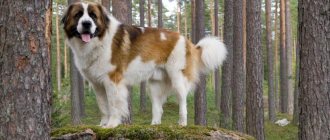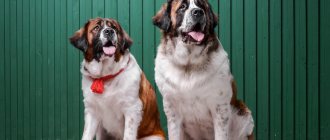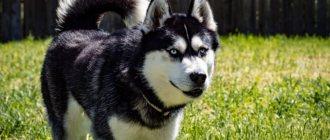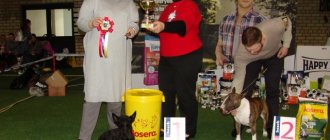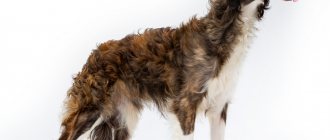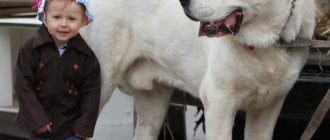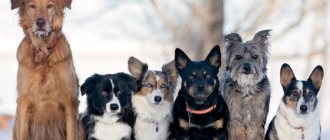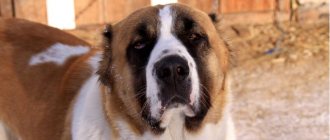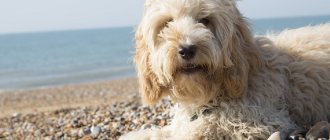The Nenets belong to one of the northern peoples, and they are divided into two groups. Representatives of the Nenets ethnic group inhabiting the Arkhangelsk region are called European Nenets, but their Siberian fellow tribesmen live in the Tyumen region and the Krasnoyarsk Territory.
Despite the fact that the Nenets remain a fairly integral people, differences in the regions of residence still remain noticeable. Today there are about 41 thousand Nenets in Russia, and interest in this people is growing every day. This is not surprising, because its representatives are the guardians of ancient culture and original traditions. How is the life of modern Nenets structured? What is interesting about their tribes? How did their ancestors live?
Voluntary cannibalism
The Nenets received such a shocking ethnonym after anthropologists became acquainted with the cruel orders that reigned in their society. According to the records of scientists made from the mouths of the Samoyeds themselves, since ancient times they had a custom of cannibalism, but it was voluntary.
According to legend, a Nenets man who felt a loss of strength, realizing that he could no longer go hunting and benefit the team and family, ordered him to be killed and eaten for the sake of a happy life for his descendants.
The children could not disobey the elder, and in the presence of the shaman, a terrible ritual of parricide was performed, after which all members of the clan ate the body of the ancestor with trepidation and reverence.
Secrets of the name
The Nenets are one of the peoples of the Arctic Ocean coast. Their lands extend from the Kola Peninsula to Taimyr. Mentions of their tribes are found in the chronicler Nestor in The Tale of Bygone Years. Among other peoples of the North, he lists the Nenets.
In the old days they were often called “self-eaters.” Agree, the word is not very attractive, and the meaning is far from positive - “eating themselves.” According to researchers, the appearance of this name was associated with a number of Nenets traditions of cannibalism, due to the performance of religious rituals.
Nenets (Samoyeds), first half of the 20th century. Location: Scientific archive of the Russian Geographical Society
It is believed that in the harsh northern climate, the ancestors of modern Nenets tried to find a source of food everywhere. They ate weaker tribesmen - this helped the rest of the community survive. A custom that might seem savage to other peoples was a sacred act for the Nenets.
However, there is another hypothesis that explains the meaning of the word “samoyed”. This word is reminiscent of the currently used “raw food”, meaning a person who eats raw food. It is possible that in the old days the Nenets also ate raw foods, which could be prepared for future use and stored for a long time.
Gustav-Theodor Pauli “Mezen Nenets (Samoyeds)” From the book “Ethnographic Description of the Peoples of Russia”
But the familiar ethnonym “Nenets” is translated from the local dialect as “real people”. Naming has been actively used since the last century, after which it became the official definition of a nationality.
Raw meat
Compared to cannibalism, the Nenets' predilection for eating raw meat and fish does not seem so horrifying, but, nevertheless, it is an atypical way of eating food.
In the calendar period from May to mid-August, when the harsh winter in the habitats of the Nenets gives way to a relatively mild off-season, it is time to slaughter reindeer raised for food.
At the same time, Nenets, young and old, can enjoy their favorite national dish - raw venison. Killed by a skillful blow of a knife to the heart, the deer is placed on an improvised table, and each participant in the meal cuts off a piece of meat, dips it in warm blood and savors his favorite dish with appetite.
In addition to elk meat, the Nenets happily eat its raw liver and kidneys, bone marrow and windpipe, lower lip and tongue, abomasum and heart, which are considered delicacies and if there is a guest in the community, these parts are hospitably presented to him.
A special treat is pancakes mixed with reindeer blood, which the Nenets actively use in fresh and frozen form.
By the way, the Nenets’ love for raw, bloody meat is explained not only by cultural traditions, but also by the body’s basic need for nutrients and vitamins C and B2, which are found in large quantities in venison.
This delicacy allows northerners not to suffer from scurvy and charges the body with the energy necessary to survive in extremely difficult natural conditions.
In winter, the place of fresh meat is taken by frozen venison, which is served in the form of thinly sliced shavings, known as stroganina. The same name is given to a dish of heavily frozen fish that the Nenets prepare on holidays. On weekdays, they prefer stroganin to “beater,” an extremely frozen fish that breaks into edible fragments when it hits a hard object.
In addition, the Nenets eat seal meat and bear meat soaked in water, but do not eat seagulls, which they consider sacred birds, and do not eat mushrooms, since they serve as food for deer.
History of the breed
The history of the origin of these dogs began about three thousand years ago, when the first cross between a dog and a white wolf appeared. The Far North, the birthplace of the breed, has a harsh climate. Samoyed dogs are fully adapted to living in low temperatures.
Local tribes, the Samoyeds, entrusted unpretentious dogs with the duties of shepherds of reindeer herds, hunters, watchmen and, most importantly, the driving force for sleds.
Centuries passed, and nothing changed in the life of the Samoyeds and Samoyeds. Herds of reindeer were still grazing, fish were being caught, and dog sleds were racing across the snowy expanses.
At the very end of the 19th century, the English zoologist Ernst Kilburn-Scott, returning home from a trip to the northern regions of Russia, brought home three Samoyed dogs. And in 1909 he opened the Farmingham nursery, which still exists today. Two years later, the first club of breed lovers in Europe was created, and the Samoyed dog standard was adopted.
The British liked the smiling northern pets. The nursery’s capabilities were not enough to provide unique four-legged friends to everyone. In the 1930s, specialized nurseries opened throughout Europe.
In Russia, the fate of the breed turned out differently. Industrialization and the flow of immigrants, the opening of plants, factories, the formation of fishing cooperatives and state farms played a bad joke on the representatives of the breed. The settlers brought with them various companions - from the yard Tuzik to elite greyhounds. People busy building communism did not pay attention to the purity of the local breed. What is a Samoyed compared to the world revolution?
Now there are practically no purebred Samoyeds left in the Far North. Russian breeders bring breeding representatives of the breed from Europe.
Bird beak toys
The antlers and beaks of killed birds shed by deer are the only toys of Nenets children, who are not even aware of the existence of teddy bears, transforming robots and all kinds of barbies.
From a very early age, Nenets boys, introduced to the traditional way of life, run around with deer antlers, pretending to race, and by the age of 7 they already know how to prepare a harness, ride a sled and lasso tame elk.
Girls at this age are allowed to do exclusively female tasks, that is, lighting a fire, preparing water and brushwood, as well as sewing. During breaks between work, they play with the traditional Nenets doll “nuhuko”, the head of which is made from the beak of a goose or duck, and the body is made of scraps of colored cloth.
In order to create a doll family, girls are given “nuhuko” of both sexes: a toy with a goose’s beak represents a man, and a toy with a duck’s beak represents a woman.
Appearance of the Nenets
The widespread settlement of the Nenets made it possible to distinguish several groups from the ethnic group, significantly different from each other in anthropological terms. This people has both Caucasian features and Mongoloid external characteristics, which is associated with the mixing processes that occurred during the formation of the ethnos. The proportion of Mongoloidity decreases as the Nenets move from the east to the western lands.
The 17th century traveler Pierre-Martin de Lamentiniere, who visited the northern lands, described the people as follows:
“The Samoyeds are even stockier than the Laplanders and Borandaians, they also have rather large heads, a flat face, a wider and snub nose; they have almost no facial hair and a sallow complexion. The men's clothing consists of a round curly hat, as if made from lamb skin, from trousers and an outer dress from the skins of polar bears... on their shoes they put on a kind of skates made of tree bark [skis], two feet long, like a gondola; on them they move very quickly through the snow, of which there is so much on the mountains.”
Since ancient times, the Nenets have been famous masters of making vehicles that allow them to move on snow. The knowledge of our ancestors has been preserved to this day. The Nenets people still use sleds today, allowing them to quickly cross snow-covered expanses. This and many other features of everyday life characterize the Nenets as guardians of the culture and principles of their people.
On the cover: National costumes of the Nenets / © Maxim Tolstoy / rgo.ru (Russian Geographical Society)
Woman - builder
Nenets wandering from place to place live in portable dwellings - tents, the “construction” of which is included in the list of usual responsibilities of local women. Accustomed to hard work from childhood, the Nenets can literally in an hour build the “walls” of a new house, consisting of inclined poles covered with deer skins.
At the heart of any chum is a hearth circle, after raising which its outline remains on the ground, which is considered the entrance to the underworld, and every woman builder knows that under no circumstances can a chum be placed there a second time.
Often the chum goes to a woman as a dowry, and is the equivalent of the prosperity of the family where the bride grew up. Despite the fact that in fact it is the girl who is considered the owner of the tent, inside it there is a special zone “si”, where she is prohibited from entering.
The thing is that there is a sacred casket with amulets of the patrons of the clan, family heirlooms, weapons and savings, which only a man can touch.
A “not” place is specially provided for a woman, where she can indulge in simple, but very labor-intensive household chores, the main one of which is lighting and maintaining the fireplace. Since men are not allowed to touch the hearth pole and hook, the plaguemistress is considered the mistress of fire, able to talk to the flames and make prophecies based on the crackling of wood and the color of smoke.
Nenets dwelling
Like their ancestors, modern representatives of the Nenets tribes build tents. They are a cone-shaped structure, the basis of which are poles (there should be exactly forty of them). Reindeer skins are placed on top of the poles, which protect the inhabitants of the tent from frost and wind. To cover this plague in winter, the skins of 65-70 deer will be required.
For the Nenets, a tent is not just a home where you can warm up, eat and relax. This is a miniature Universe that belongs to every family. In the plague there is an ancient principle of placing things, an order that cannot be violated. The Nenets believe that harmony in the plague helps to find peace with the surrounding reality.
In addition, the shape of the plague can determine the wealth of the family. If you see a pointed building, you can be sure that a poor family lives in it. In the wealthiest Nenets clans, plagues have a blunt-ended form.
The Nenets have a plague inside / © Robert Talipov / rgo.ru
Superstitions
According to Nenets superstitions, children should never dig the ground, play with water or fire, and men should not enter the tent in outerwear. In addition, in Nenets culture it is forbidden to sing at the table, finish food for the elderly, help the housewife clear the dishes and leave empty cups unturned.
The Nenets celebrate their birthday only once, receiving a deer as a gift, among which the one with a white color is especially revered: it is not harnessed to a sledge, but is decorated with ribbons and protective amulets.
Description of the Samoyed dog breed
This is a medium-sized dog with a harmonious build, grace and, at the same time, strength. Over time, Samoyed dogs divided into two varieties:
- wolf type - lean individuals, with an elongated muzzle and body;
- bear type - with a powerful, shortened body and massive head.
Despite the differences, both types are distinguished by proportionality and harmony.
- Depending on gender, height is from 46 to 56 centimeters, weight is from 20 to 30 kilograms.
- The coat is long and thick, shorter on the face and front of the paws. The undercoat is fluffy and dense. A “collar” is formed around the shoulders and neck, and “pants” are formed on the hips. Natural oils are formed on the wool, promoting self-cleaning.
- According to the standard, there can be three colors. White, cream and white-biscuit. There are kennels specializing in black Samoyeds, but this color is not recognized by cynological associations.
- “Smiling” is achieved due to the raised corners of black lips, the unique shape and location of the eyes.
- The nose is wide and convex. It can be black, brown or “meaty” in color. But purebred individuals will definitely have a black edging of the lobe.
- The ears are covered with fur both outside and inside. Rounded at the tips. An adult dog must have them.
Why are Samoyeds called that?
So, who are Samoyeds? As it turns out, this is the general name of the indigenous population of the northern regions of the Russian Federation, which include: Nenets, Selkups, Entsy, Nganasan, etc. To put it simply, these are all those representatives who communicated in the Samoyed language. In terms of lifestyle and behavior, this group is closest to the Finns, although their spoken language is significantly different. But why are these peoples called Samoyeds? Is the reason for such a strange name hidden in cannibalism? Let's try to find out.
Versions of the origin of the name of the breed
In addition to the most common version of the appearance of the name of the breed, there are other opinions as to why the Samoyed breed is called that way:
- The Samoyed tribes are the only ones who harnessed dogs rather than reindeer to sleds. Due to the white color of the animals, indistinguishable in the snow, people who did not know about this breed thought that the cart drove through the snow on its own. Therefore, the sled teams were called “samoyeds” or “samoyeds,” and later the same name extended to sled dogs.
- Some peoples of the Samoyed group, for example, the Enets, were forbidden to use dogs as a driving force; they moved on reindeer sleds or on skis. The sight of a person skiing on snow alone could also give the entire tribe and their pets the name "Samoyed".
- There is another version why Samoyed dogs were named that way. The very name of the breed, according to some experts, comes from the phrase “same-edne”, which in the language of the ancient Samoyeds meant “land inhabited by the Sami” (the Sami are a small northern ethnic group that lives in Russia, Finland and Norway).
Note! The Samoyed Laika is a primitive (that is, retaining the features of primitive dogs) breed. Even 3000 years ago, she was a companion, warmer, nanny, and “transport force” of the peoples of the Far North.
Samoyeds are companion dogs that perfectly understand their owner’s mood.
Samoyeds
Samoyeds
,
Samoyeds
- the general name of the indigenous small peoples of Russia: Nenets, Enets, Nganasans, Selkups and the now extinct Sayan Samoyeds (Kamasins, Koibals, Motors, Taigians, Karagas and Soyots), speaking (or speaking) the languages of the Samoyed group, forming together with the languages Finno-Ugric group of the Uralic language family. Most of the Samoyed peoples (Nenets, Enets, Nganasans, Selkups) live in the Nenets Autonomous Okrug of the Arkhangelsk Region, the Yamalo-Nenets Autonomous Okrug of the Tyumen Region and in the Taimyr Dolgano-Nenets District of the Krasnoyarsk Territory.


